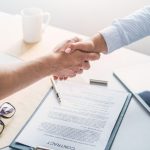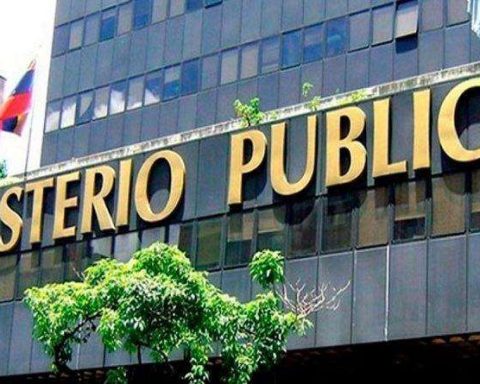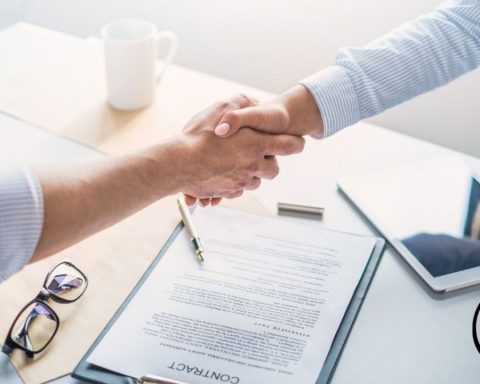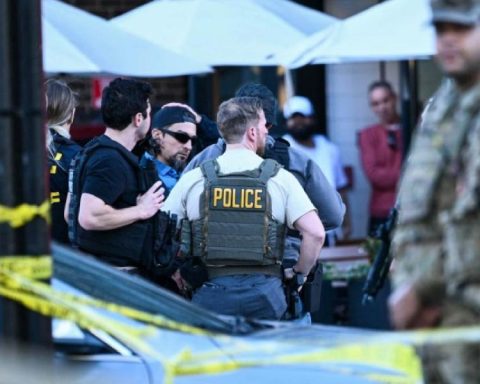September 22, 2022, 7:00 AM
September 22, 2022, 7:00 AM
“It is classified as unsatisfactory, due to the impacts and risks caused by the land titling process, without an adequate application of the Environmental and Social Management Plan (ESMP)”, he concluded. a first Progress Monitoring Report (PMR) from the Inter-American Development Bank (IDB)about the rural land titling and titling project in Bolivia, which was published at the end of 2021.
The document noted, with regard to indigenous territories in favor of third parties or their conversion to fiscal land, lack of consultation and due compensation previously negotiated in good faith.
Similarly, he noted that no analysis of potential significant conversion and degradation through land use changenor adequate support and monitoring measures, putting the country at risk of non-compliance with B.9 of OP-703, one of the IDB’s environmental policy guidelines, which refers to natural and cultural habitats.
“The Bank will not support operations or activities that in its opinion significantly convert or degrade critical natural habitats, or damage sites of critical cultural importance,” says point B.9 of OP-703.
In a second reportpublished in 2022, the IDB gave a slightly more positive assessment to the sanitation work, and indicated that INRA was in the process of updating the PGAS.
“In the mission, INRA presented the status of progress in the socio-environmental points of the action plan agreed with the IDB, which is in the process of being executed,” the report concluded.
These main advances are concentrated in four points. The first is that environmental and social specialists are finally considered as part of the INRA team.
Second, the IDB rescued that Terms of Reference (TOR) are also contemplated and that the process of contracting specialists for updating the PGAS had begun. “At that time, it did not have adequate plans for managing environmental and social impacts.”
As a third point, the IDB highlighted that participatory titling mechanisms have been implemented for the remaining areas, in compliance with the demands of indigenous peoples, and that coordination meetings were held with the indigenous authorities to guide this titling process.
Finally, a fourth point is that there is already a considerable development of the SIMAT/SIG Inter-operational Platform of INRA, “for the transparency of the agrarian process, the same one that has been exposed in the mission”.
statistics
An INRA report on the process of granting fiscal land in Santa Cruz, updated until September 2021, indicates that in the department settlement authorizations for 940 new communities, covering an area greater than 1.5 million of hectares (ha).
Likewise, 67 communities were accounted for, in 301 thousand ha. In total, up to that date, 1,007 communities were included in the endowment process (authorization and titling), to access almost two million ha (1,833,380 ha).
Most of these beneficiaries received land in Cordillera, Guarayos and Chiquitania. In this last region, with special emphasis on San José de Chiquitos (266 new communities), San Miguel (74), San Rafael (103), San Ignacio (171), and Concepción (103).
As for social organizations, of the 1,007 new communities up to September of last year, 707 (70%) were from the Single Trade Union Confederation of Rural Workers of Bolivia (CSUTCB); 187 of the Federation of Intercultural; 65 of the Confederation of Indigenous Peoples of Bolivia (one of the three Cidob); 38 of Bartolina Sisa; 8 from the Landless Movement (MST); one from the National Council of Ayllus and Markas of Qullasuyu (Conamaq); and a Mennonite.
As far as INRA funding requests are concerned, Until September of last year, only in Santa Cruz there were 4,305 applications, for 161,000 families, for a total of 8,113,800 ha.plus 1,399 award requests.
Most of these requirements were in the municipalities of yesan José de Chiquitos (754 communities), San Ignacio de Velasco (549), Pailón (437), Concepción (364), San Miguel (304)San Rafael (288), Ascensión de Guarayos (217), Roboré (214), and El Puente (173). The requests were placed on 49 of the 56 municipalities of the department of Santa Cruz.
In the same document, INRA makes it explicit that, of the more than eight million hectares demanded, only 929,000 are availablewhich leaves a negative difference of more than 7,000,000 ha.
Based on the Land Use Plan (PLUS) of Santa Cruz, INRA establishes that there are almost three million ha for intensive agricultural use; more than six million ha for extensive agricultural use; almost 3,000,000 ha for agrosilvopastoral use; almost ten million for forest use; more than three million hectares for restricted use; and, finally, more than 11.2 million hectares for protected natural areas.
Between the lands for forest use -where the concessions are located-, and those of protected areas, increasingly pressured and overwhelmed, they add up to more than 20,000,000 ha. This, added to the scarcity of available land, compared to the demand, could explain the pressure from social movements for the reversal of forest concessions, and the inaction of the authorities in the face of progress on protected areas.
At the national level, land applications reach 6,233, for more than 11,000,000 ha, plus 2,643 adjudication requirements. Almost 70% of the demand points to Santa Cruz. It is followed by Beni, with 875 requests, for 1,251,700 ha; then comes La Paz, with 609 requirements, for just over 1,000,000 ha.
In third place is Pando, with 181 requests, for more than 133,000 ha. Tarija follows, with 146 claims, for 143,450 ha.
Deliveries for Santa Cruz party
For this September 23, on its social networks, INRA has called an appointment at the Santa Rosita Coliseum, starting at 3:00 p.m., which will be attended by Luis Arce and David Choquehuanca.
In an interview on Radio Santa Cruz, the national director of INRA, Eulogio Núñez, confirmed the delivery of titles and new settlement authorizations.
“The Land and Territory Commission of the Eastern Bloc has been reactivated. Titles and resolutions will be delivered to women, peasants, natives. Our president never comes empty handed, in this case (it will be) the organizations of the Eastern Bloc“, said.
For this purpose, for some time now reinforced the Land Distribution Unit, with the opening of a new office, at 373 Velasco Street. This is a seized property, which is under the custody of the Ministry of Government.
Representatives of the social movements, the Vice Ministry of the Environment, and the Forest and Land Inspection and Social Control Authority (ABT) were present for the presentation of the new offices.
Likewise, approximately a month ago, INRA has begun the process of verifying compliance with the Social Function (SF) in the communities of Chiquitania, most of them belonging to the Csutcb, many of them with settlement resolutions that have already exceeded two years established by the agrarian regulations as a term for reversion.
Unofficial data indicates that A good part of it has no inhabitants, but it does have groups that exert pressure when the inspection is carried out.
The names of the communities were published in two edicts on different dates, in the media, but they do not appear on the INRA digital portal.
In Cochabamba, on September 14, for the 212th anniversary of that department, INRA delivered 7,608 titles property executables.
Reversals are triggered
On its social platforms, the Departmental INRA reported on the attention, on September 14, to the demands of the Federation of Ranchers of Santa Cruz (Fegasacruz), on issues of sanitation, administrative processes and subjugation of private properties.
However, associates of Fegasacruz sent INRA notifications to EL DEBER, one of them dated September 15, regarding the agrarian procedure of reversal of two properties in the Cordillera province. “We couldn’t make any progress at all, it was a total waste of time, to soften up and stab ourselves,” some ranchers lamented.
The document, signed by Eulogio Núñez Aramayo, national director of INRA, and by Howard Arroyo Camacho, national director of sanitation and titling; indicates that from September 20 to 22, the hearing to verify compliance with the Economic and Social Function (FES) will be held for the La Tunita properties, owned by Mary Chamón, widow of Abella, and the La Cueva property, owned by José Eduardo Abella Soliz , which together add up to almost 3,000 ha. The notification, in addition, informs of the preventive annotation of the properties, located in the Gutiérrez municipality.
In another notice, dated August 2 of this yearor, the INRA sent to Fegasacruz the administrative agrarian decree of the El Trébol property, of more than six thousand hectares, owned by Dieter Jorge Gutiérrez Tarradelles, and located in the Ascensión de Guarayos municipality.
According to the notification, the property is superimposed on the categories of permanent production forests, regulated forest use and agrosilvopastoral use.
In El Trébol, the verification hearing of the Economic and Social Function (FES) was already held on December 12 and 13, 2021, and the complementation of the verification of the FES on August 18 and 19 of this year.
According to Eulogio Núñez, concluding the sanitation process is a priority for the Government of Arce Catacora. He said that only 8% is pending and that at the national level there are 26,900,000 hectares left, but that of that amount it is necessary to see how many would be to distribute, so that communities can be formed.
He assured that in Guarayos there is very little left to conclude, but that there is a lot of conflict over access to and ownership of the land, just like in Pailón and Chiquitania. “The north of Santa Cruz is practically being concluded, also in the valleys. The Chaco area, Cordillera, is also quite advanced, just like Andrés Ibáñez,” he said.
He recognized that it is an important area in the Chiquitania that is pending, and that is why there is a lot of tension.
For Fundación Tierra, the sanitation process in Bolivia is overshadowed by several factors.
The entity argues that it is a process that does not take into account more than figures in hectares and titles; that the endowment of titles to women does not verify its consolidation or context.





















